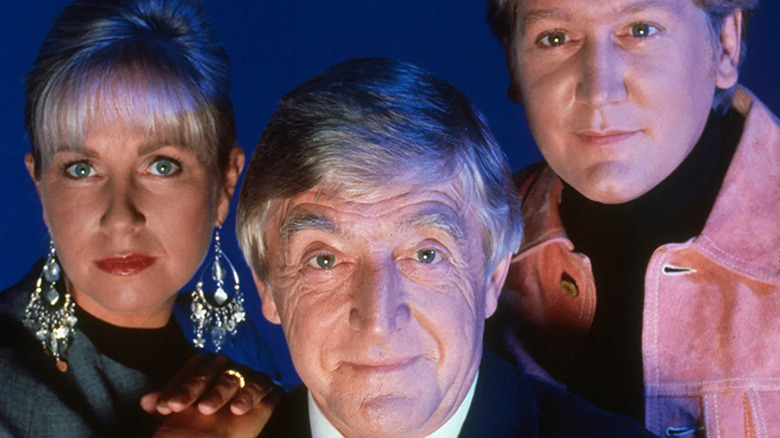
I was still dressed as a mummy when I sat down to watch TV after trick-or-treating on Halloween night in 1992. I was a skinny lad, so binding my limbs tightly in bandages made me look more like a weird spindly white insect than King Tut. Self-conscious of this, I wore my Adidas bench coat over the costume, which completely ruined the effect.
I couldn't tell you what my costume was 12 months earlier or the following year, but Halloween of '92 remains so clear in my mind because that was the night of "Ghostwatch." I loved anything related to the supernatural, so I just couldn't wait: The BBC was conducting a live paranormal investigation into poltergeist activity! It was a big event heavily publicized in the run-up to Halloween, and 11 million viewers tuned in that night. The next day the whole country was talking about it.
"Ghostwatch" wasn't a real live ghost hunt, but rather a supernatural drama film produced under the BBC's Screen One banner months in advance. Unfortunately, many people didn't see that memo and either missed or ignored the writer and cast credits at the start of the program, taking it as a real-life incident. During the transmission, the BBC's phone lines were inundated with calls from alarmed viewers.
It was the UK's "War of the Worlds" moment and the outrage was predictably stoked by the tabloids. There were rumors that people had even died from fright (we'll touch on that later), adding to the film's terrifying reputation. I was scared s***less, but absolutely loved it; those of us who recorded it on VHS pored over our tapes, trying to spot all the fleeting glimpses of Pipes, the malevolent ghost in the story. The BBC backed away from "Ghostwatch" in the aftermath, which only added to its enduring mystique.
So What Happens In Ghostwatch Again?
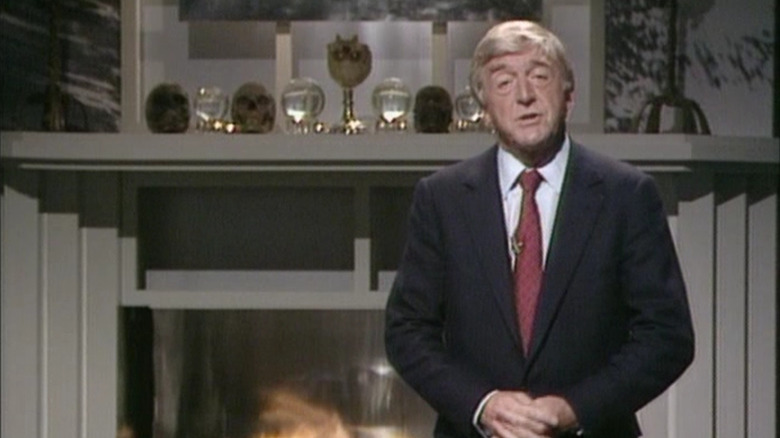
It is Halloween night and the BBC is conducting a special live investigation into disturbances in an ordinary home in Northolt, Greater London, where single mother Pamela Early (Brid Brennan) and her two daughters have endured 10 months of poltergeist activity. The malign entity apparently manifests itself as a ghost that the children call "Pipes," who lives in the glory hole under the stairs. No sniggering, please; back then in Britain, a "glory hole" was just a cupboard where you put your junk. Again, no sniggering, please.
In the studio, venerable presenter Michael Parkinson (playing himself) asks expert advice from parapsychologist Dr. Lin Pascoe (Gillian Bevan), while Mike Smith (also himself) mans the public phone-in. Out on location, reporter Sarah Greene (herself) is in the house with the family and a camera team, who rig the joint with CCTV cameras and the latest tech to try catching definitive proof of ghostly activity.
Meanwhile, Craig Charles (himself) interviews bystanders and uncovers some disturbing urban legends that go back decades. Throughout the broadcast, we learn of the area's sinister history, including animal mutilation, a Victorian child murderer called Mother Seddons, and Raymond Tunstall, a pedophile who took his own life in the Early household back in the '60s and was partially eaten by pet cats trapped in the house with him after he died.
When things start going bump in the night on cue, the case is initially dismissed as a hoax when one of the girls is caught faking spooky noises. But things take a turn for the worst when she starts speaking in a demonic voice and scratches appear on her face. The paranormal events escalate with terrifying force, and it becomes apparent that the live broadcast has inadvertently become a nationwide seance.
The Casting Of Ghostwatch Was A Masterstroke
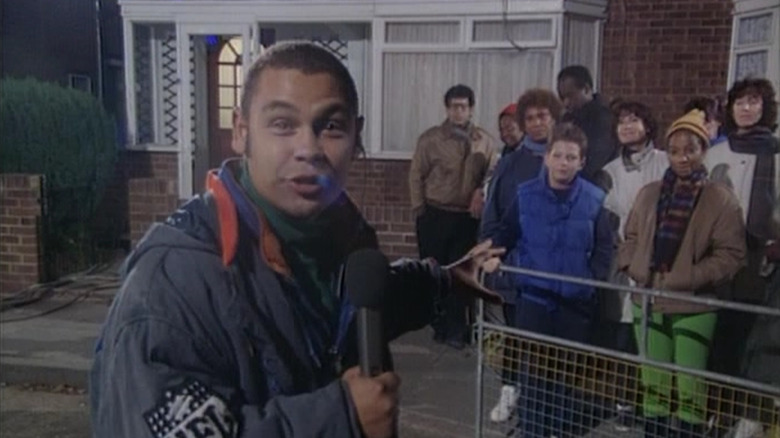
The sheer effectiveness of the casting was crucial in lulling the unsuspecting public into a false sense of security. "Ghostwatch" was hosted by familiar, trustworthy faces that we all grew up with on TV, cozy personalities usually associated with family-friendly shows, each of them playing themselves.
First up is veteran presenter Michael Parkinson, affectionately known to the nation as "Parky," overseeing proceedings as the host. Even at the beginning, when he warns viewers that the program contains scenes that some might find disturbing, his avuncular presence makes us feel like we were in safe hands. Also in the studio was Mike Smith on the phone-in, a familiar face and voice on BBC TV and radio in the '80s, whose plain appearance belied a somewhat prickly persona.
Out on location, Craig Charles is out on the street interviewing people. As the star of "Red Dwarf," the hippest show on the BBC at the time, he is cheerful and jokey, giving it the full cheeky Liverpudlian charmer act. Lastly, giving the best performance in the film is Sarah Greene with the family. She was best known for children's shows like "Blue Peter" and "Going Live," and has such a warm, comforting presence that we genuinely fear for her when things get really scary in the house. Greene and Smith were married, and their relationship added extra stakes that pay off so strongly in the film's nightmarish conclusion.
They all gave game versions of themselves, but they are let down a little by Gillian Bevan's apprehensive performance as the parapsychologist. Especially viewing at a distance of decades, she is so wooden, unconvincing, and not helped by the writing at all, which has her responding to most questions with a vague "I don't know."
Does Ghostwatch Still Hold Up?
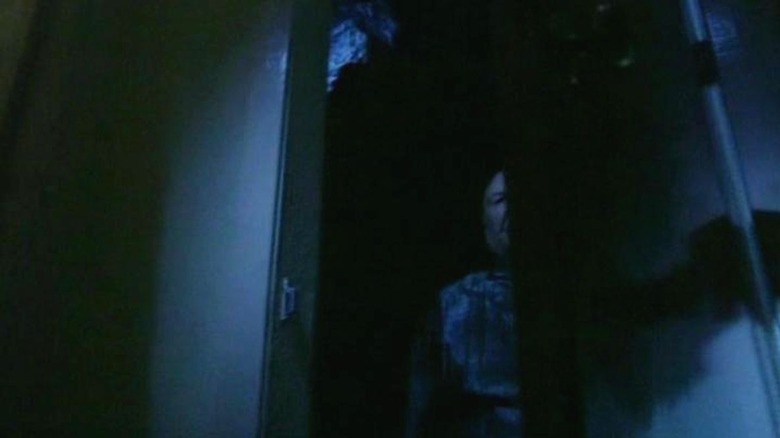
"Ghostwatch" might look rather dated to the modern eye, especially in the scenes set in the studio, but that blandness was key to what director Lesley Manning wanted to achieve. As film critic Kim Newman noted (via the documentary "Behind the Curtains"):
"There are many, many households where the default setting is the television being on, and so therefore no one actually watches it... Of course, 'Ghostwatch' depends on that in order to sneak past, depends on it looking, at least at the beginning, like the kind of programming that is just wallpaper."
That approach caught the viewing public off guard on the night and it loses some of its fright factor when you know it isn't the real deal. One thing that remains is this: "Ghostwatch" is still a really chilling ghost story.
The slow-burn build-up creates a sense of mounting dread, and the urban legends provide a disturbing background for the action. Then there is the sheer normality of the setting. As Parky says at the beginning, "no creaking gates, no gothic towers, no shuttered windows." The family lives in an ordinary semi-detached house, much like my family's and just about everybody else I knew, too. It felt all too real.
I'm always struck by the mundane setting's claustrophobic effect. When we're watching Sarah Greene running around the house on CCTV, we see how small the space is. There is nowhere to go, which also has a scarier connotation: She is never far away from where the ghost could appear next.
Pipes is still terrifying, precisely because we almost never see him. Made up to look like someone mauled by hungry cats, we get only the briefest glimpses, leading up to the horrifying scenario when Greene disappears into the Glory Hole with him, never to be seen again.
Why Was Ghostwatch So Groundbreaking For Its Time?
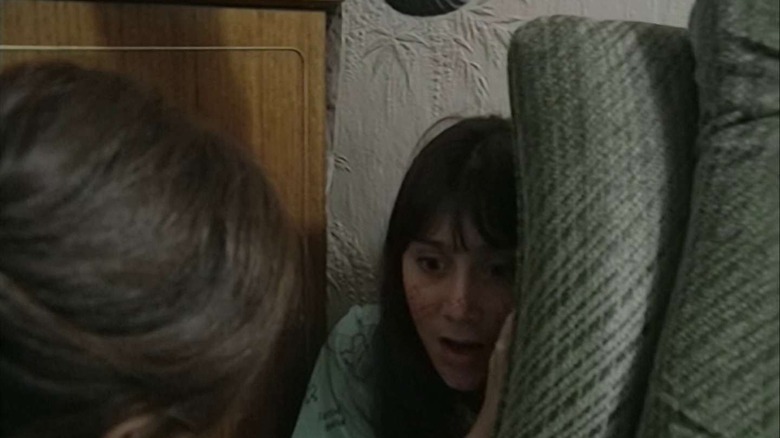
So how did stuffy old "Auntie Beeb" end up screening a fake live broadcast that terrified the nation and tapped into found footage tropes years before "The Blair Witch Project" popularized the genre?
The publicly funded broadcast company has been in the doldrums for quite a few years now, but the BBC has a long history of quality drama. From "The Quatermass Experiment" to "I, Claudius," "Pennies From Heaven" to "Boys From the Blackstuff," the Beeb often commissioned groundbreaking, challenging, award-winning programming for grown-ups, with platforms like "Play for Today" providing a showcase for writers like Dennis Potter and directors such as Alan Clarke, Mike Leigh, and Ken Loach. Most devastatingly, there was "Threads," an incredibly harrowing documentary-style imagining of a nuclear strike on the UK.
True to this tradition, "Ghostwatch" showed that the BBC's appetite for pushing the boundaries was still alive and well in the early '90s. Screenwriter Stephen Volk, partially inspired by the Enfield Poltergeist case in the '70s, initially conceived the show as a six-parter culminating in a live broadcast from a haunted flat in London. Together with his producer Ruth Baumgarten, they decided to focus on the live aspect, presenting the drama as something happening in real-time, something completely unprecedented on UK television at the time.
Following the live TV format, the standard BBC call-in number popped up from time to time, supposedly for viewers to share their tales of the supernatural during the event. Callers would be reassured that "Ghostwatch" was fiction, but there was a problem. With only a handful of people manning the phones, the lines quickly became swamped as things got creepy, which only added to the realism.
The Aftermath
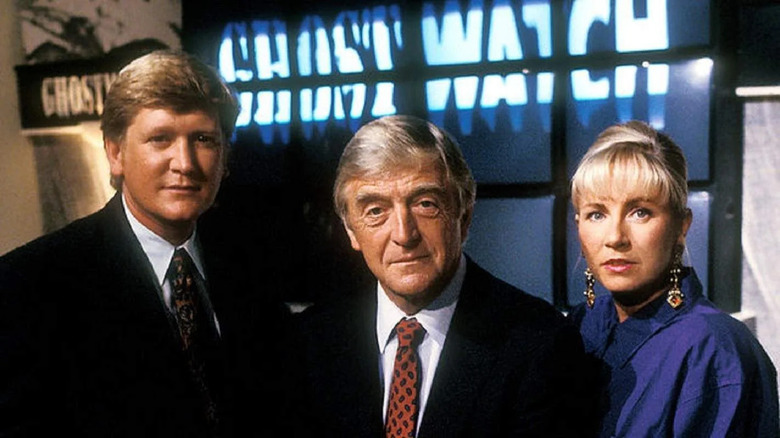
The BBC's switchboards reportedly received one million calls during the broadcast of "Ghostwatch." Not all of them were from angry or scared viewers; some called in to praise the innovative presentation of the story.
In the media s***storm that followed, the tabloids added fuel to the fire with headlines like "Viewers Blast BBC's 'sick' ghost hoax" (The Sun) and "This TV programme killed our dear son" (The Mail on Sunday). Among stories of kids suffering PTSD-like symptoms and pregnant women scared into early labor, there was the tragic case of 18-year-old Martin Denham, a young man with learning difficulties who died by suicide five days after the film aired. His parents blamed his obsession with "Ghostwatch" for his death.
The Broadcasting Standards Commission initially rejected the complaint, along with 34 others, but subsequent intervention by the High Court required that the BSC look into the matter. Their findings stated (via BBC):
"[The BBC] had a duty to do more than simply hint at the deception it was practising on the audience... [there was] a deliberate attempt to cultivate a sense of menace."
The coroner's verdict on Denham's death didn't mention the film, but the producers were forced into issuing an apology and admitting that if they'd known how badly some audience members would react, they would have made its fictional nature clearer.
The BBC disowned "Ghostwatch" as a result of the backlash and has never screened it again. Remarkably, for a TV film so innovative with record-breaking viewing figures, it didn't receive a single BAFTA nomination. There is a suggestion that the BBC itself squashed any chances of it getting nominated (via "Behind the Curtains").
The Afterlife Of Ghostwatch
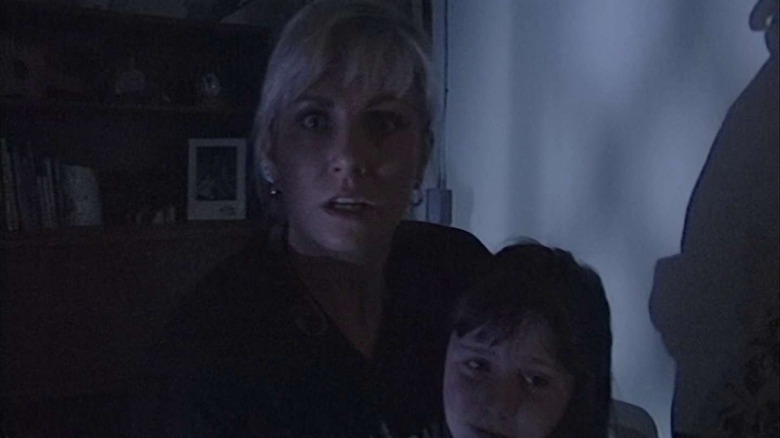
For years "Ghostwatch" was a hard-to-find cult item with fans tracking down bootleg tapes and VHS recordings from the night. Parkinson was outspoken about the BBC's disownment of the film (via "Behind the Curtains"):
"It displayed the BBC at its corporate worst. Instead of being proud of a drama that had, I think, still holds the record today for viewing figures, 11 million... it's an extraordinary figure, even in those days... I mean, they'd die for it today, wouldn't they?"
"Ghostwatch" gradually became recognized as a bonafide horror classic when the BFI belatedly released it on DVD in 2002, and it has become a solid alternative viewing choice around Halloween. For its 18th anniversary, a "National Seance" invited viewers to participate by playing their personal copies at exactly 9.25 P.M., the time of the original broadcast, and share their thoughts on Twitter.
"Ghostwatch" was one of the last great shared viewing experiences before the onset of cable, satellite TV, internet, and streaming services atomized people's watching habits, and it's hard to imagine how such a stunt could be pulled off now. It also inhabits a strange space in the canon of found footage horror. It wasn't the first -- that honor attributed to the grisly "Cannibal Holocaust" -- and neither was it strictly found footage, as it was mocked up as a live broadcast. Yet many of the tropes we now recognize in the genre took flight in that hoax Halloween event perpetrated by the BBC.
There is a new flurry of interest in "Ghostwatch" accompanying its 30th anniversary, with a glossy new Collector's Edition Blu-ray to commemorate the landmark. Hopefully, it will help a new generation discover the film, and also cower under their bedsheets for fear of Mr. Pipes standing in the corner of their bedroom.
Read this next: The 31 Scariest Movie Scenes Ever
The post Ghostwatch at 30: The Brilliant BBC Halloween Stunt That Terrified The Nation appeared first on /Film.
0 Comments